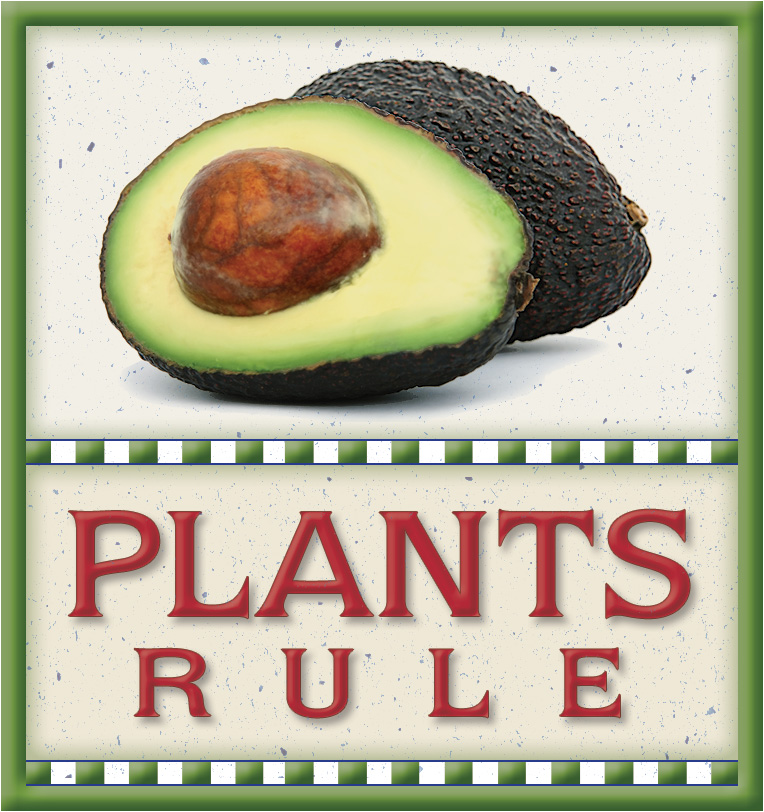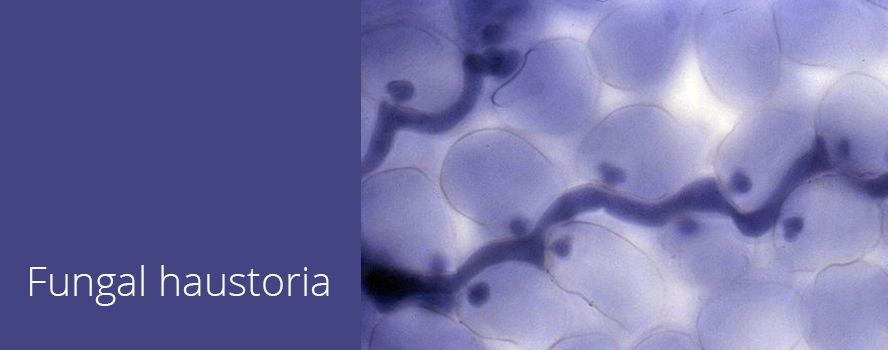By Emmanuel Boutet – Own work, CC BY-SA 2.5, https://commons.wikimedia.org/w/index.php?curid=1374083
Fungal Haustoria Absorb Nutrients from Living Plant Cells
by Helga George, Ph.D.
Some fungal pathogens use specialized feeding organs that engage in dynamic plant-pathogen interactions through the plant’s plasma membrane.
Despite the rotted plants that are visible from certain fungal infections, some fungi require living hosts for a successful infection. These types of fungal interactions are known as being biotrophic. One hallmark of such fungi, which include the rusts and powdery mildews, is that they produce specialized feeding structures within plant cells. These unwieldy structures are known as haustoria. They provide nutrients to the fungus and disperse molecules that can intercept the plants’ resistance mechanisms.
What are Fungal Haustoria?
Fungal haustoria are feeding organs that are produced from spores that germinate on the surface of plants, generally on leaves or stems. They may produce a penetration peg known as an appressorium and penetrate the plant’s cell wall. Not all fungal pathogens produce appressoria to penetrate cells. After penetration, the hyphal tip forms an invagination within the cell that becomes the haustorium. This structure is an extension of the extracellular mycelium, or filaments, of the fungus. Between the fungal cell wall and the plant’s plasma membrane is a carbohydrate-rich gel known as the extrahaustorial matrix.
The fungal haustorium transfers sugars and amino acids into the fungal cells through the extrahaustorial matrix. Another haustorial function that has been recognized more recently is the transmission of effector proteins into the plant cell. These are molecules that frequently interfere with the plant’s attempts to contain the fungal infection. Plants have a broad array of defense mechanisms, including walling off the invading fungi with a carbohydrate known as callose. Frequently, the fungal invaders can block these defenses.
What Types of Fungi Produce Haustoria?
Haustorium production is limited to fungi that need their plant host to be alive for at least part of the life cycle. Some types of fungi known as mycorrhizae produce haustoria. These fungi have a symbiotic relationship with roots and are beneficial to their host plants. There are different types of mycorrhizal associations, and it is the vesicular-arbuscular mycorrhizal fungi that form haustoria. Biotrophic fungi are fungal pathogens that require a living plant for all of their life cycle, while hemi-biotrophic fungi need the plant to be alive at the beginning of their infection. These fungal plant parasites produce haustoria. Fungi that kill their hosts are known as nectrotrophic fungi. Such pathogens do not produce these specialized feeding structures.
Biotrophic fungi include the rust fungi, visible by the frequently rust colored pustules of spores apparent on their hosts. These fungi are highly specialized and attack only certain species or strains of plants. They can be devastating pathogens of cereals, greatly hampering the production of grain. There is currently a new strain of wheat rust threatening the wheat crops around the globe. Powdery mildew fungi are also biotrophic. These types of infections are visible as a whitish haze on plants. They are sometimes confused with downy mildew.
Biotrophic Fungi Debilitate Plants
Fungi that do not kill their hosts utilize specialized feeding structures called haustoria. These structures are formed from a hyphal tip that penetrates into the host cell and forms a union with the plant’s plasma membrane. Signals between the plant and pathogen travel back and forth through this extrahaustorial membrane, which also serves as the site for the uptake of nutrients. This constant drain of nutrients is a strain on the plant’s resources. Plants with such biotrophic infections frequently suffer yield losses and are visibly stunted in their growth.
References:
Alexopoulos, C.J. and C.W. Mims. 1979. Introductory Mycology, Third Edition, Wiley & Sons, N.Y.
Szebo, L. and W.R. Bushnell. 2001. “Hidden robbers: The role of fungal haustoria in parasitism of plants,” Proceedings of the National Academy of Sciences, USA, 98:7654-7655.
Wang, W., Y. Wen, R. Berkey, and S. Xiao. 2009. “Specific targeting of the Arabidopsis resistance protein RPW8.2 to the interfacial membrane encasing the fungal haustorium renders broad-spectrum resistance to powdery mildew,” The Plant Cell, 21:2898-2913 abstract
QUICK LINKS TO ALL
Suite.io Articles
by Helga George, Ph.D.
AGRICULTURAL SCIENCE
• Polyphenol Oxidase Enzymes Cause Browning of Fruits and Vegetables
CHEMICAL ECOLOGY
• Domoic Acid Poisoning in Sea Lions
• Insects that Make Cyanide
PLANT PATHOLOGY
• Plants Produce Chemicals as a Defense Against Pathogens
• Wheat Rust Threatens World’s Wheat Crops
• Biotrophic Versus Necrotrophic Fungi
• Fungal Haustoria Absorb Nutrients from Living Plant Cells
• The Gene-for-Gene Concept: a Central Tenet in Plant Pathology
GARDENING
• Oenothera speciosa—a Drought Tolerant Perennial Groundcover
• The Magic Lily—a Drought Tolerant Species of Lycoris
SOIL MICROBIOLOGY
• Streptomyces, Antibiotics, and Microbial Conflict in the Soil
AGRICULTURE IN SANTA BARBARA COUNTY
• Chrysanthemum White Rust Outbreak in Southern California

